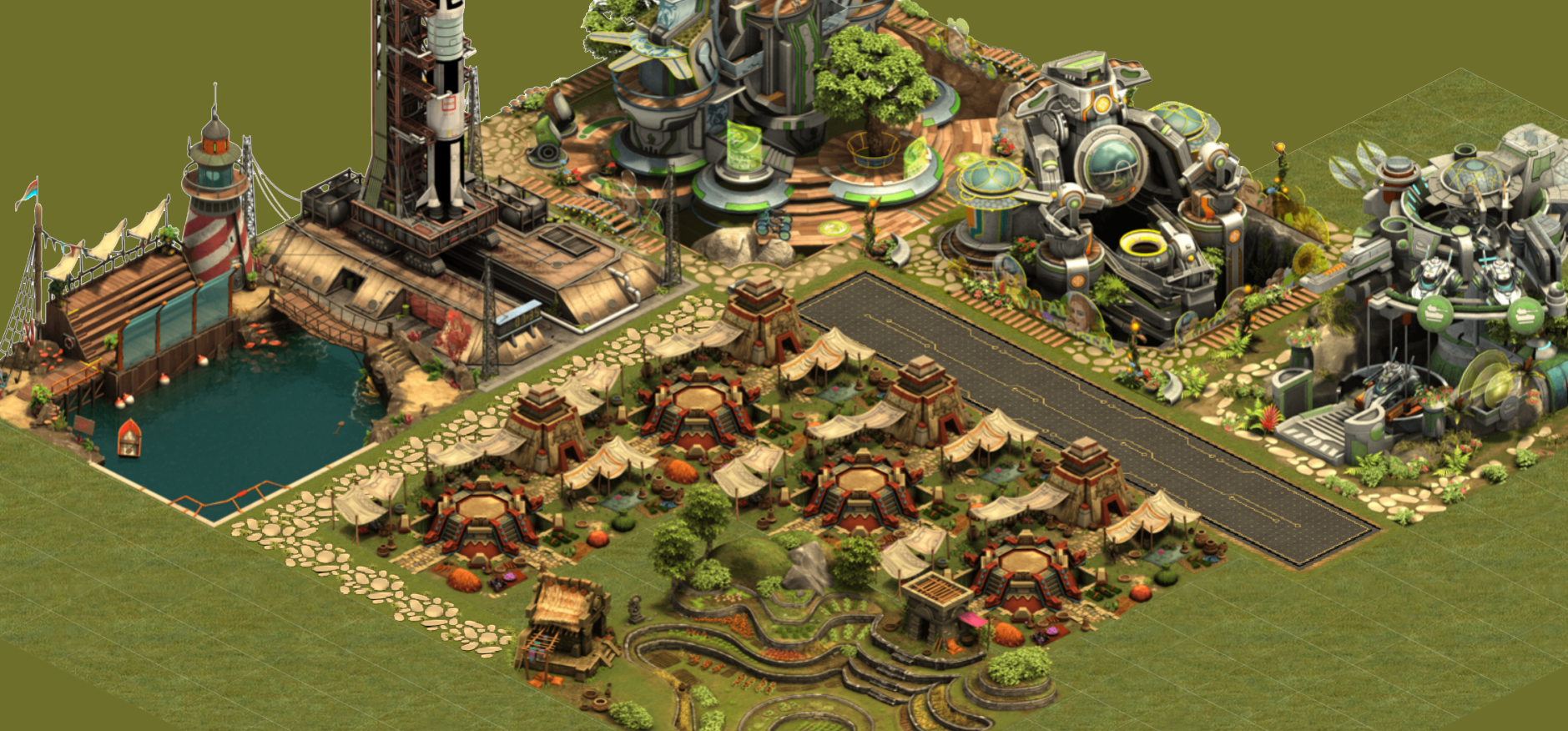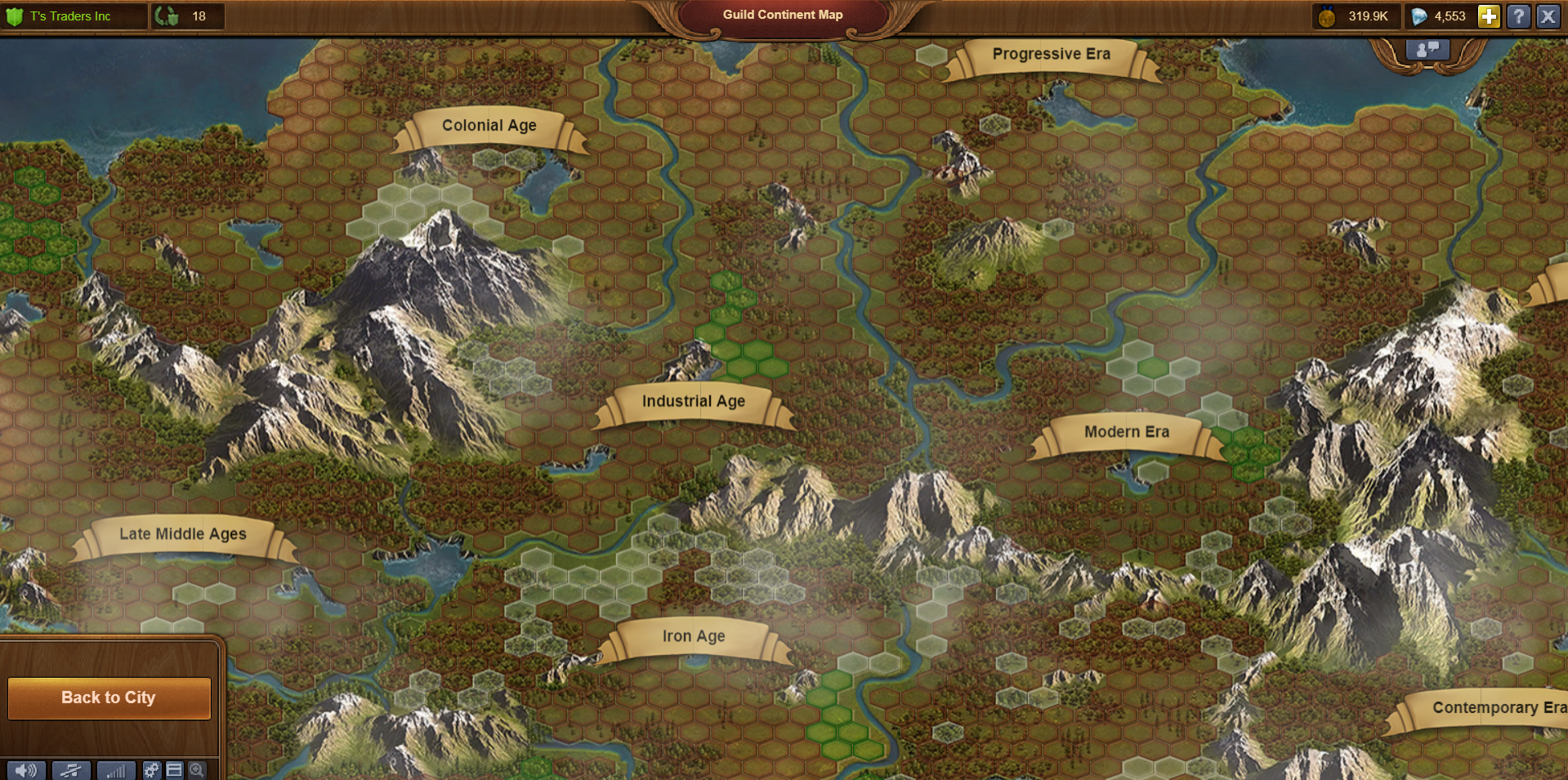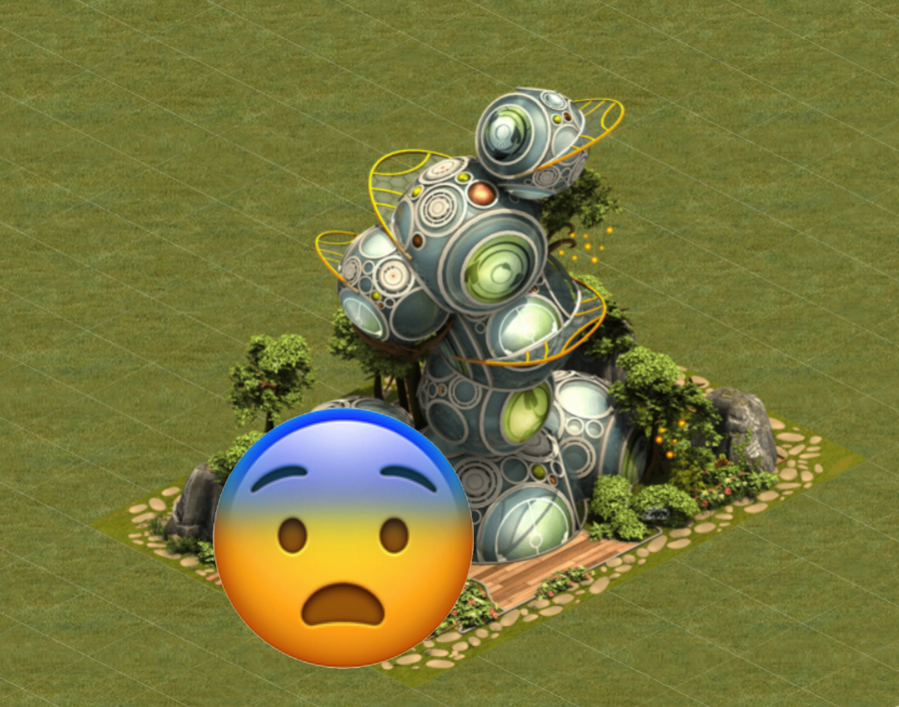It has been said in various places on this site, but the most valuable resource in this game is space. It’s the one thing that you have a hard limit on, both based on era and overall. Eventually there’s simply no more room available to you, and you need to decide what to keep in your city, and what to toss. That’s where building efficiency comes in, and it’s going to require a little math to determine. I promise though this is very simple math, so please don’t panic (yet).
Generally speaking, when it comes to building efficiency it’s not necessarily about how many different things it produces, but rather how many resources per square it’s producing. If that sentence is confusing please don’t fret, because we’ll be breaking this down when we get to the [dreaded] math. Essentially though we want to know resource per square as a measure because the more resources you’re creating per square, the more efficient the building is.
I did mention multiple resources though, didn’t I? We all know many event buildings grant us more than one thing upon collection, which is awesome because we’re getting more bang for our buck. Don’t get too excited though, because even if a building is producing four unique things instead of just two, it doesn’t necessarily make it better. How do you know which is better? That’s entirely personal, because it depends on what you value.
Say for example you are a fighter. Your main focus is gaining attacking army boosts, both attack and defense, and that is what you want to be the priority in your city. That would mean a building that grants attack boost(s) will always take priority over one that doesn’t, even if the one that doesn’t offers extra goodies over one that does. If you negotiate mostly this priority might be goods, if you’re in need of FPs it might be those, so on and so forth. It’s also important to note that your priority might change depending on where you are in your game play strategy (so in the beginning FPs might take priority, but that could then shift to goods, and then maybe it shifts elsewhere for example), so don’t be afraid to rip out things that you used to need but are no longer serving you in lieu of something better suited to where you are now. If it’s irreplaceable (or hard to replace), use a store building item. Otherwise just demolish it.
So step one to this process is always asking yourself: Does this building meet my priority criteria? If that answer is no, then skip it in favor of one that is a yes.
Step two is the math–dun dun dun!!!
Okay, yes, I promised it would be easy math, and it is!
When you look at any building you will always see a little block image with two numbers that go something like “4×5” or “3×3” or “6×4”, etc. This is the size of the building, and we all know it corresponds to how many squares of space it’s going to take up, length by width (essentially, since the city is built on a diamond). This set of numbers is the first part to the math and it’s literally showing you the equation–you multiply them. This completes step one of the math.
Step two for the math is looking at your priority item, and seeing what it’s quantity is. So if it’s FPs, you want to know how many FPs the building produces. If it’s attack boost, you want to know the percentage. So on and so forth. Take this number and divide it by the answer you got in step one. You will usually get a decimal, but sometimes you get whole numbers. This number is the efficiency per square.
Once you have the final number you can then compare buildings to each other. The bigger the number you have, the more efficient the building is. That’s it, it’s that simple. Let’s work through an example for the math, then I’ll share some comparisons for reference.
So remember, our math is this:
- Multiply the two numbers indicating the size of the building. For example, a Terrace Farm is 5×6, so five multiplied by six is thirty, meaning 30 is our answer.
- Take the number of the item you care about, and divide it by the answer you got in the first step, and that gets you the amount per square. Continuing with our Terrace Farm example, lets say it’s level two, if we were looking at FPs that’s 12 a day. So twelve divided by thirty (our answer from step one) is zero-point-four, meaning our answer is 0.4 FPs per square.
The only time this math will change slightly is if you’re not running something on a one day timer, like a Sunken Treasure for goods–that’s 8hrs. You can collect it twice (easily) so as an add-on to step two, first multiply the number you care about by the number of collections per day you’ll get (so in the case of a Sunken Treasure that is 2, maybe 3 depending on your schedule). Then follow the rest of step two as usual.
Onto the example. We’ll do one that every player encounters early on, and that’s supply production. Let’s look at The Butcher and The Goat Farm from Iron Age. Which one is more efficient?
| Butcher | Goat Farm | ||
| Step 1: Multiply the two numbers for the space required. | 4×3 = 12 | 4×5 = 20 | |
| Step 2: Find the priority (supplies) and divide it by the first answer. In this case the values we can see are supplies per hour, so before we do step 2 we need to multiply this number by how many collections we expect to get. For our example lets say we figure we’ll collect 8 times. | 160×8 = 1,280 1,280÷12 = 106.67 |
220×8 = 1,760 1,760÷20 = 88 |
|
| Final Look: We compare the two numbers we got from step 2, and the larger of the two is the more efficient option. In this case it’s The Butcher, by a lot. | 106.67 Supplies per Square | 88 Supplies per Square | |
Yes, it really is that simple. Honestly and truly that’s all there is to it. Now, you might need a pen and paper to jot some notes (or similar) to help keep track of the information, but overall it is not difficult to calculate the efficiency of a building. You can even use it for Great Buildings, to determine how well they’re doing for your city (and perhaps if you need to level it up to make it more worthwhile yet).
Lets look at some other [common] items for their efficiency, just to have some more examples and really get a feel for this.
| Item | Size | Priority & Amount | Efficiency per Square |
| Cider Mill (Progressive Era) | 2×3 (6) | Supplies per 8hr, two collections 2,948×2 (5,896) | 982.67 Supplies |
| Confectionary (Progressive Era) | 4×2 (8) | Supplies per 8hr, two collections 2,810×2 (5,620) | 702.5 Supplies |
| Yggdrasil | 3×3 (9) | Attack Boost 30% | 3.33% Boost |
| Cherry Garden Set Level 2, 5 unique pieces | 5×5 (25) | Attack Boost 10% | 0.4% Boost |
| Castle del Monte Level 10 | 5×5 (25) | Attack Boost 30% | 1.2% Boost |
| Shrine of Knowledge Level 1 | 2×2 (4) | FPs 1 (when motivated) | 0.25 FPs |
| Sacred Sky Watch Level 1 | 3×2 (6) | FPs 1 (when motivated) | 0.167 FPs |
| Sleigh Builder | 2×3 (6) | [Refined] Goods per day, 15 (3ea kind for era) | 2.5 Goods |
| Ferris Wheel: Great Wheel Option | 6×4 (24) | [Refined] Goods per day, 30 | 1.25 Goods |
Those are just 10 examples of various buildings using various priorities, but you can do this for any building you need while picking your own priority to look at. Hopefully between the math and this final brief set of examples you feel confident in doing so, because making your city as efficient as possible maximizes your space and helps you rise up to be the best player that you can be. Don’t feel like a poor player though if you choose to keep an inefficient building just because you happen to like it–it’s your city and you can do what you want. This just gives you the knowledge to compare things when it comes to hard choices.





Recent Comments